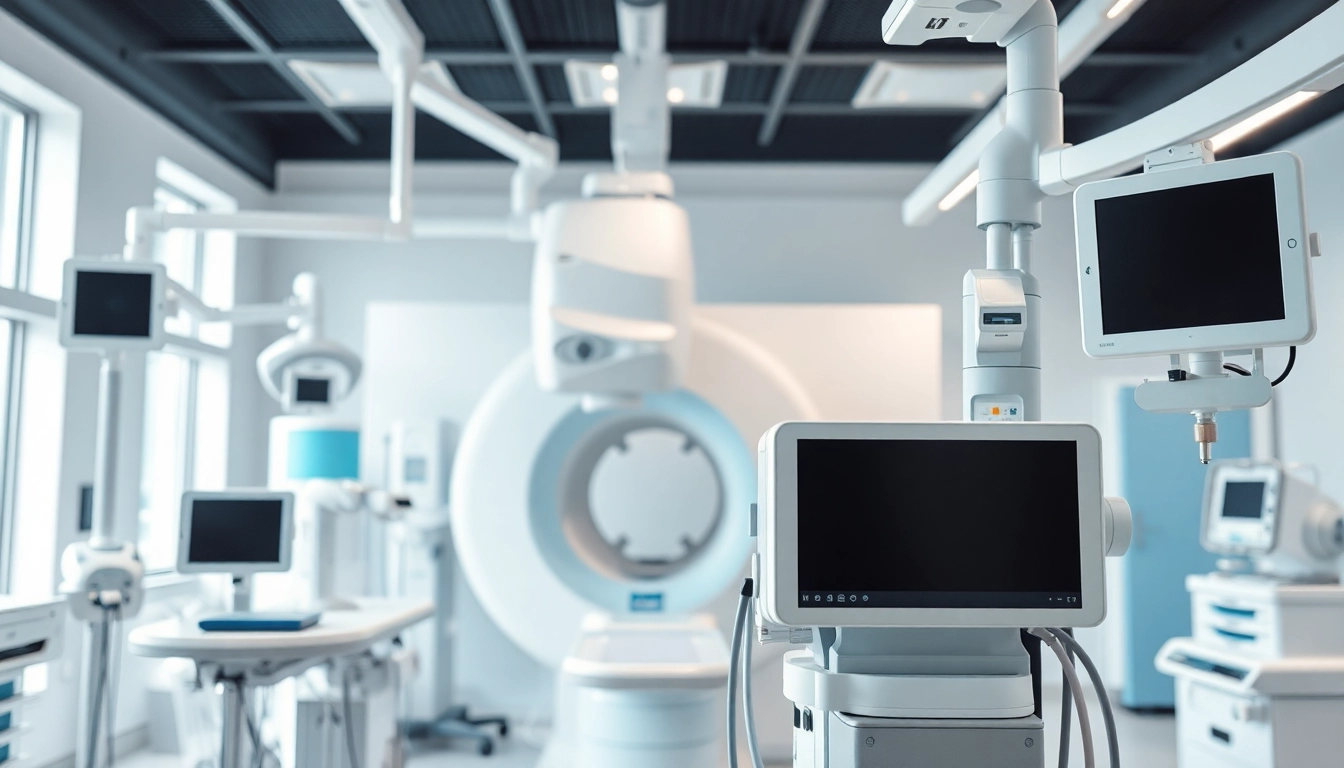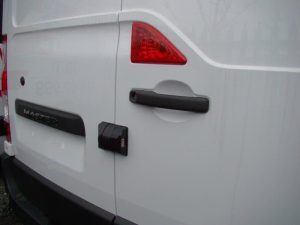Enhancing Healthcare with Medical Parker Solutions for Modern Practices
Understanding Medical Parker Equipment
The realm of healthcare technology has witnessed profound transformations over the years, leading to enhanced patient care and operational efficiencies. Among the pioneering advancements is the integration of medical parker solutions that bridge gaps in healthcare delivery through innovative equipment and systems. This article will delve into the specifics of medical Parker, outlining its features and applications, alongside its profound impacts on modern healthcare.
What is Medical Parker?
Medical Parker refers to advanced medical equipment and systems designed predominantly for imaging and diagnostic processes in healthcare settings. The technologies included under this umbrella typically enhance the quality of medical imaging, streamline operations, and improve overall patient outcomes. By focusing on developing innovative imaging components, medical Parker serves a crucial role in helping healthcare professionals make accurate diagnoses and provide timely interventions.
Key Features of Medical Parker Technology
Medical Parker equipment is characterized by a range of innovative features that facilitate precision and reliability in medical imaging. Notable aspects include:
- High-definition Imaging: Medical Parker technologies provide superior imaging quality, allowing healthcare providers to visualize intricate details essential for accurate diagnosis.
- Integrated Solutions: These systems often comprise components that seamlessly work together to reduce the need for multiple device setups or manual configurations, enhancing workflow efficiency.
- User-Friendly Interfaces: Designed to be intuitive, the interfaces of medical Parker technologies enable healthcare professionals to operate the equipment with minimal training.
- Compatibility across Platforms: This technology is engineered to be compatible with various healthcare systems, ensuring effortless integration into existing setups.
- Data Analytics Capabilities: Incorporation of analytics features allows for ongoing assessments and insights into patient data, empowering medical teams to make informed decisions based on real-time information.
Applications in Modern Healthcare
Medical Parker technologies have a wide array of applications within the healthcare sector, particularly in diagnostic imaging and patient monitoring:
- Radiology: Medical Parker imaging solutions are fundamental in radiological procedures, facilitating quick identification of medical conditions from X-rays and MRIs.
- Centralized Monitoring: Devices designed for continuous monitoring of patients are essential in intensive care units, providing real-time data to healthcare teams.
- Telemedicine: With the increase in remote patient consultations, medical Parker solutions support the provision of high-quality imaging necessary to diagnose patients outside traditional settings.
- Orthopedics: Specialized imaging equipment aids orthopedic surgeons in visualizing musculoskeletal issues, ensuring precise surgical interventions.
Benefits of Using Medical Parker Solutions
Opting for medical Parker solutions within healthcare facilities yields multiple benefits that extend to both providers and patients alike. These advantages encompass improved clinical outcomes, operational efficiencies, and cost-effectiveness.
Improving Patient Outcomes with Medical Parker
Better diagnostic accuracy leads directly to enhanced patient care. With high-definition imaging capabilities, healthcare providers can detect conditions at earlier stages, which often translates to more effective treatments and improved survival rates. Moreover, the integration of analytics into medical decisions fosters personalized care plans, addressing individual patient needs more effectively.
Cost-Effectiveness of Medical Parker Technologies
Investing in medical Parker equipment can lead to significant cost savings for healthcare facilities. By enhancing the efficiency of workflows, reducing unnecessary imaging procedures, and minimizing patient waiting times, these solutions can decrease operational costs. Moreover, early diagnosis and treatment facilitated by advanced imaging technologies often lead to lower treatment costs over time.
Streamlining Medical Equipment Integration
The compatibility of medical Parker equipment with existing systems allows for smoother implementations without the need for extensive infrastructure overhauls. This streamlined integration not only minimizes disruptions in daily operations but also promotes a more cohesive healthcare delivery model.
Choosing the Right Medical Parker Products
Selecting the appropriate medical Parker products requires a thorough understanding of the specific needs and capabilities of a healthcare facility. This emphasis is vital to harness the benefits of these advanced technologies effectively.
Assessing Your Healthcare Facility Needs
A careful assessment of existing facilities, technologies in use, and overall patient demographics can guide the selection of the most appropriate medical Parker technology. Factors to consider include types of services offered, the volume of patients, and spatial arrangements within the facility.
Comparative Analysis of Medical Parker Products
Undertaking a thorough comparative analysis of various medical Parker products available on the market is essential. This can involve reviewing features, performance metrics, and user reviews, which provide insights into the effectiveness and reliability of different solutions.
Getting Feedback from Healthcare Professionals
Engaging healthcare professionals in discussions concerning their experiences with medical Parker technologies will yield valuable insights. Conducting surveys or holding focus groups can pinpoint preferences and areas for improvement, thus aiding in better decision-making.
Implementation of Medical Parker in Healthcare Settings
Once the appropriate technology is selected, implementing it effectively is crucial for the facility’s success. This process involves several key stages.
Steps for Successful Integration of Medical Parker Equipment
The integration of medical Parker equipment must be managed meticulously. Essential steps include:
- Preparation of Infrastructure: Confirm that existing electrical, mechanical, and spatial infrastructures can accommodate the new technology.
- User Training: Organize training sessions for relevant personnel, ensuring everyone is well-equipped to use the new technologies effectively.
- Testing and Fine-Tuning: Conduct thorough testing of the equipment to identify and address any mechanical or operational issues before full utilization.
- Continuous Monitoring: Once implemented, consistent monitoring should take place to gauge performance and address any arising challenges quickly.
Training Staff on Medical Parker Technology
A vital aspect of successful implementation is staff training. Well-structured training programs should emphasize:
- Hands-on training with the equipment
- Demonstrating the interface and functionalities
- Addressing troubleshooting techniques to handle common issues
- Continued education opportunities as technology evolves
Setting Up Maintenance and Support for Medical Parker
Post-implementation, establishing a robust maintenance schedule for medical Parker equipment is key to ensuring longevity and reliable performance. This should include regular servicing and updates to components, along with support from technicians familiar with the technology.
Future Trends in Medical Parker Innovations
As advancements in healthcare technology continue to unfold, medical Parker solutions are poised to evolve dramatically, driven by user needs, technological advancements, and healthcare trends.
Advancements in Medical Parker Technology
Emerging trends such as the integration of ultra-high-resolution imaging and portable imaging devices are expected to be significant components of future medical Parker advancements. Innovations that emphasize mobility and accessibility will make diagnostic imaging more efficient, especially in underserved regions.
The Role of AI in Medical Parker Applications
Artificial Intelligence is set to revolutionize medical imaging, enhancing diagnostic capabilities through pattern recognition and predictive analytics. This shift not only promises faster diagnoses but also aims to reduce human errors in interpreting imaging results.
Anticipating Changes in Healthcare Needs
With the ever-changing landscape of patient needs and healthcare delivery models, medical Parker technologies will need to be adaptable. By staying ahead of trends such as personalized medicine and preventative care, medical Parker solutions can align more closely with future healthcare priorities.














Post Comment